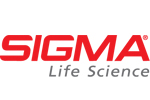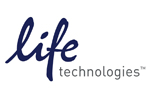08:00 |  Technology Spotlight: Technology Spotlight:
A User’s Experience: How to Work with Oncological Samples - From Difficult Starting Material Towards Reproducible qPCR Results
, , SelectBio
|
|
Session: microRNAs in Aging, Disease and Trauma |
| |
08:45 |  | Keynote Presentation MicroRNAs and Aging
Frank Slack, Director, Institute for RNA Medicine, Beth Israel Deaconess Medical Center Cancer Center/Harvard Medical School, United States of America
To identify new roles of microRNAs in life span, we undertook a deep sequencing survey of miRNAs from aged C. elegans. We show that microRNAs are necessary for a normal lifespan and that microRNA expression patterns can be useful biomarkers of aging. |
|
09:15 | MicroRNA-Based Therapeutics in Cardiovascular Disease – Quo Vadis?
Jan Fiedler, Senior Post Doctoral Researcher, Medical School Hannover, Germany
Comparison of different miRNA-antagonist chemistries, identification of new microRNA-based mechanisms in heart failure, development of new microRNA-based therapeutic strategies for heart failure. |
09:45 | hsa-miR-148a as a Potential Target for the Treatment of Osteoarthritis
Lucienne Vonk, Postdoctoral Researcher, University Medical Center Utrecht, Netherlands
MicroRNAs are believed to be potential targets for the treatment of osteoarthritis (OA). We have identified 66 microRNAs that are differentially expressed in OA and modulating the expression of one of these, hsa-miR-148a, increased the chondrogenic capacity of OA chondrocytes. |
10:15 |  Technology Spotlight: Technology Spotlight:
Viral-Based Gene Modulation: Screening with Individual shRNA Constructs or Pooled shRNAs
Stephanie Urschel, Senior Field Scientist, Thermo Fisher Scientific
|
10:30 | Coffee Break and Networking in the Exhibition Hall |
11:15 | In Vivo Chitosan/siRNA Nanoparticles Specific Targeting and Knockdown in Proximal Tubular Epithelial Cells in Kidney via Megalin Mediated Pathway
Shan Gao, Senior Scientist, Aarhus University, Denmark
Specific accumulation of chitosan/siRNA demonstrated in mouse kidney by Northern blot and bioimaging; localization of siRNA was at PTECs; particles were only in megalin-expressing cells in megalin conditional-knockout mice, indicating uptake via a megalin-dependent pathway; aquaporin1 was silenced in mice. |
11:45 | A Damage Specific Set of miRNA Species are Transported in Microparticles that are Released into the Cerebrospinal Fluid (Csf) following Traumatic Brain Injury (Tbi)
Ute Schäfer, Head, Medical University Graz, Austria
Cerebral cell-cell communication by extracellular transport of specific miRNAs in cerebrospinal fluid of patients has never been described before. This new pathway now permits the study of regulative processes during diseases such as Alzheimer's or Parkinson's in an otherwise impenetrable organ. |
12:30 | Lunch |
12:45 |  Free Workshop Free Workshop
Targeted Genome Editing and Epigenetic Modification in Eukaryotic Systems
|
13:30 | Poster Viewing Session |
|
Session Continued: microRNAs in Aging, Disease and Trauma |
| |
14:15 | Inhibition of Human Rhinovirus Replication in Mice by Highly Selective Small Interfering RNA
Jacques Rohayem, CEO and Founder, Riboxx, Germany
In this study, experimental data in mice on inhibition of Rhinovirus infection by a new class of siRNA, the IVORI™ siRNA is presented. The IVORI™ siRNA allows maximal silencing, displays optimal serum stability and very low toxicity. |
14:45 | MicroRNAs are Required to Repress Inflammatory Pathways in Adipocytes
Mireille Cormont, Senior Scientist, University of Nice, France
miRNA plays an important role in mature adipocyte. They repress inflammatory pathways that are deleterious for adipocyte functions and thus potentially involved in systemic glucose and lipid homeostasis. |
15:15 | Coffee Break and Networking in the Exhibition Hall |
|
Session: Advances in RNAi Screening and Optimisation |
| |
15:45 |  | Keynote Presentation Miniaturised Cell Based Assays For RNAi, Screening Beyond The State Of The Art
Anthony Mitchell Davies, Director, Trinity College Dublin, Ireland
This presentation will discuss the experimental issues currently encountered by many researchers attempting to miniaturize cell based assays and how new technologies such as micro-bioreactors can and are being used to solve many of these technical problems in our siRNA screening experiments. |
|
16:15 | Optimizing siRNA Performance by Chemical Engineering
Jesper Bramsen, Post Doctoral Researcher, Aarhus University, Denmark
Synthetic siRNAs hold great therapeutic potential but are hampered by for example low biostability, lack of efficient means of delivery, immunogenicity and off-target effects. We present here our efforts to improve siRNA performance by chemical engineering to aid the further development of siRNA therapeutics. |
17:15 | Close of Conference |







